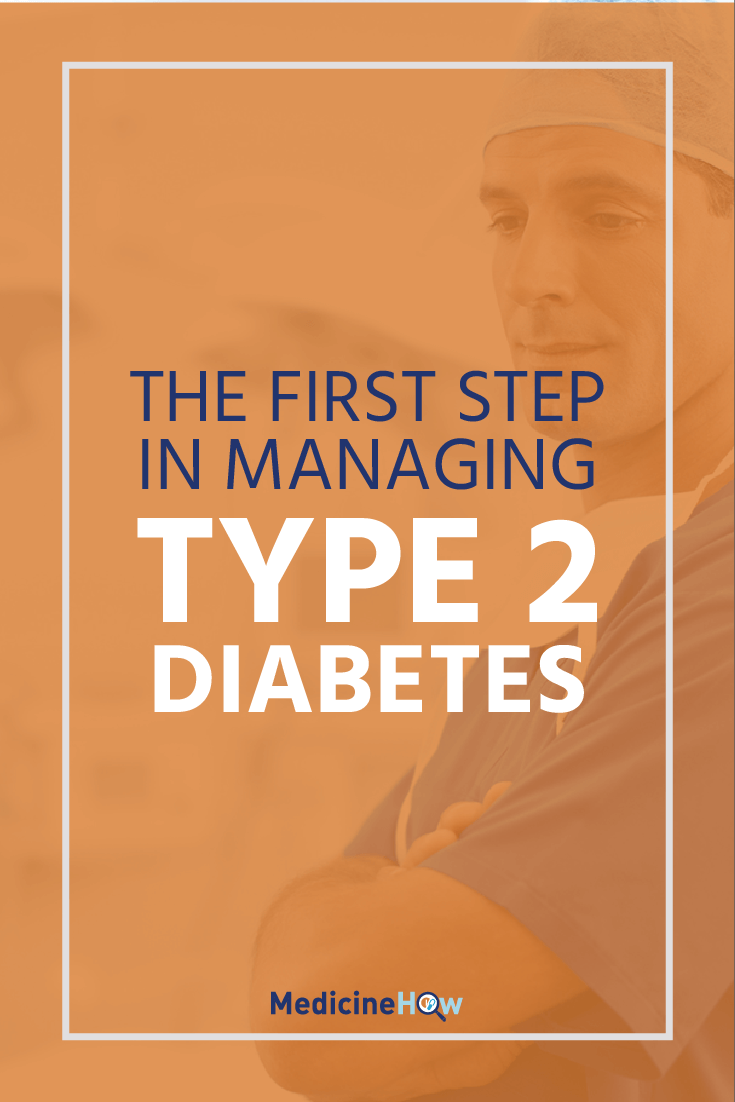Sometimes, the answer is more straightforward than we were expecting. The best way to managing Type 2 Diabetes is one question that invites a simple answer – at least at first.
Type 2 diabetes is a little more hopeful than Type 1 because the pancreas is still functioning and there’s some insulin in our bloodstream. It’s just not working as well as it should be (read about this here).
It is for this reason that we have a broader range of options than what we can offer to someone with Type 1 diabetes, who has little choice but to begin therapy with insulin.
For someone with Type 2 diabetes, we may not even need to resort to medication at all.
No, the first step to managing Type 2 Diabetes is all natural.

Many cases of Type 2 Diabetes are a result of poor lifestyle choices – reverse these, and we can begin to see some changes in the glucose levels in the blood and diabetes control.
A huge risk factor for Type 2 Diabetes is being overweight. In fact, one study found that obese middle-aged women were 40 times more likely to get Type 2 diabetes that those who were classified as slim. Additionally, 2 out 3 of three people with Type 2 diabetes could have avoided the disease if they had maintained a healthier body weight (read here, page 49-50).
The take home message?
We need to take a good look at how we may be causing the problem ourselves before we even consider using any drugs. Start at the roots.
It’s a well-worn message, but an important one nonetheless.
Managing Type 2 Diabetes: What can we do?
The main idea behind lifestyle to manage weight and diabetic control is based on using as much or more energy than we consume.
What does this mean?
We need to move as much or more than we eat.
Sounds simple, and it is.
About Nutrition
The most important part is to choose the right types of food.
Different foods have different amounts of energy and fat in them and some are certainly better than others.
A variety of fresh, unprocessed foods is the optimal choice.
Legumes, fruit, vegetables, lean meat and fish are perfect.
Avoid (or minimise) processed, sugary and fatty foods. Particular saturated fats (those taken from animal sources, like butter) are more harmful than unsaturated fats found in plants, like olive oil. So avoid where you can and substitute saturated fats for unsaturated fats when you want a little dose of fatty flavour.
Fortunately, it doesn’t have to involve dramatic changes that leave you crankily craving food all day. In fact, it is the small daily changes that we can maintain over long periods of time that are the most effective in the long run.
About Exercise
On the other side of the coin there is movement. The more energy we use by doing exercise, the more our body needs to eat (and the easier the nutritional part becomes!)
Although any physical activity is beneficial, there is one thing in particular I’d like to advocate for today.
Walking.
Why? It’s easy. You can fit it into your day. And it’s low intensity, which gives your body time to convert your stored body fats into energy to use.
Around an hour and a half every day of brisk walking should have a noticeable effect, something I truly believe is achievable for everyone.
Skip the traffic jam and walk half an hour to work. Get off the bus a few stops early. Clear your head in the morning with a half hour walk. Walk the dog. Buy a dog to walk if you really need to. Walk to the grocery store.
Sometimes walking takes the same amount of time but we just get into the car out of habit. All it takes is a second thought and your can change your small daily habits.
Managing Type 2 Diabetes: Beyond Lifestyle
This advice goes beyond people with Type 2 Diabetes. Everyone should at least be aware of these points and try to make an effort to feed their body in the best possible way.
Ideally, people that are a little overweight should also get their blood glucose levels frequently checked (you can do this at the doctor or many pharmacies), given their increased risk of getting Type 2 diabetes.
Finally, for those who do have blood glucose levels a little high – either diagnosed with Type 2 Diabetes or heading in that direction – the simple lifestyle changes should be the first port of call.
It is only after we have attempted to get back on the right track with natural methods that we should consider drug therapy, except in particularly severe cases. It is most beneficial, and also most logical, to start with the cause.
This is the seventh post in the All About Diabetes series. We’ve already talked abut hypoglycemia and next up we’re going to discuss Oral Medication Options for Type 2 Diabetes.

